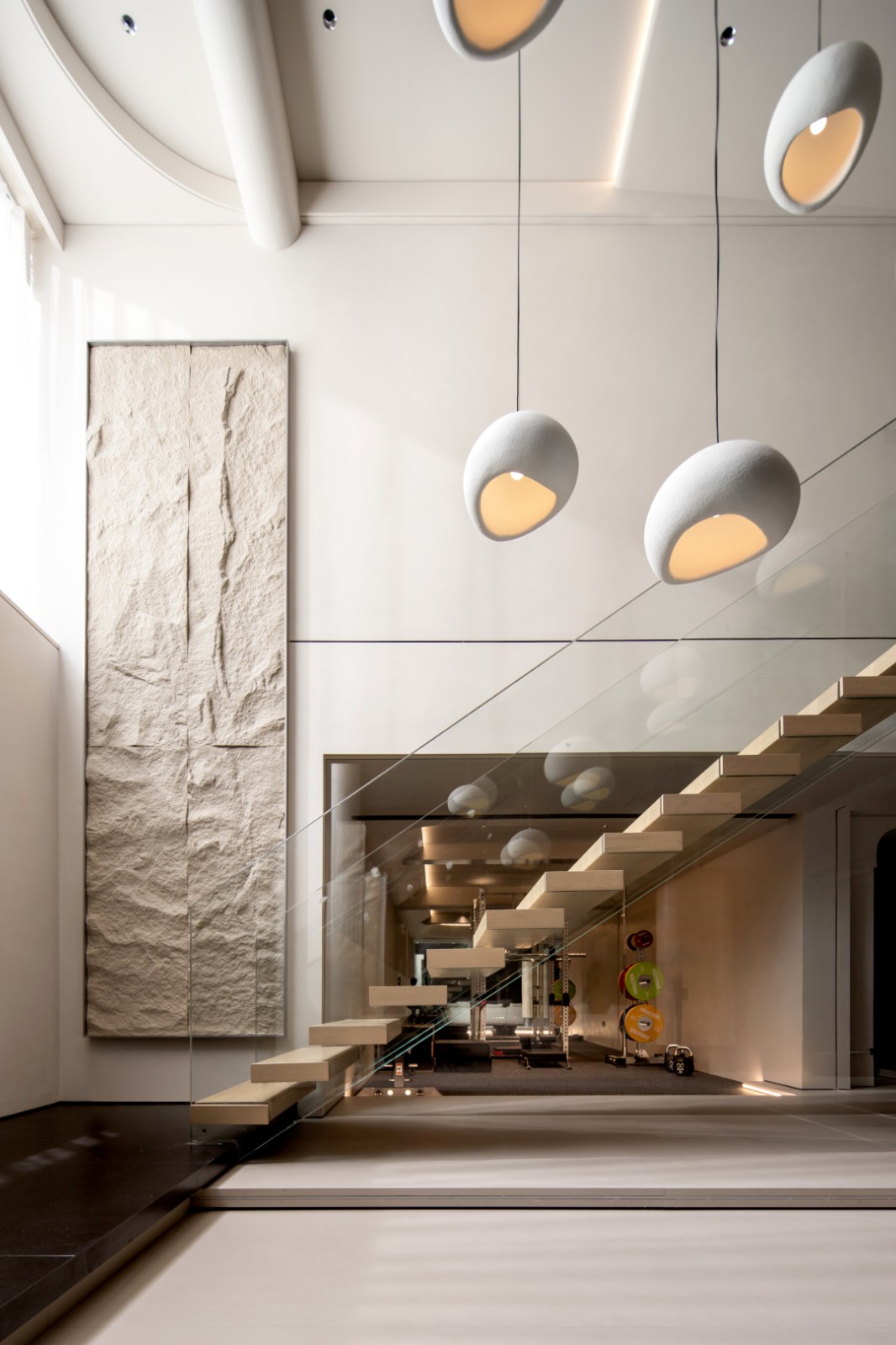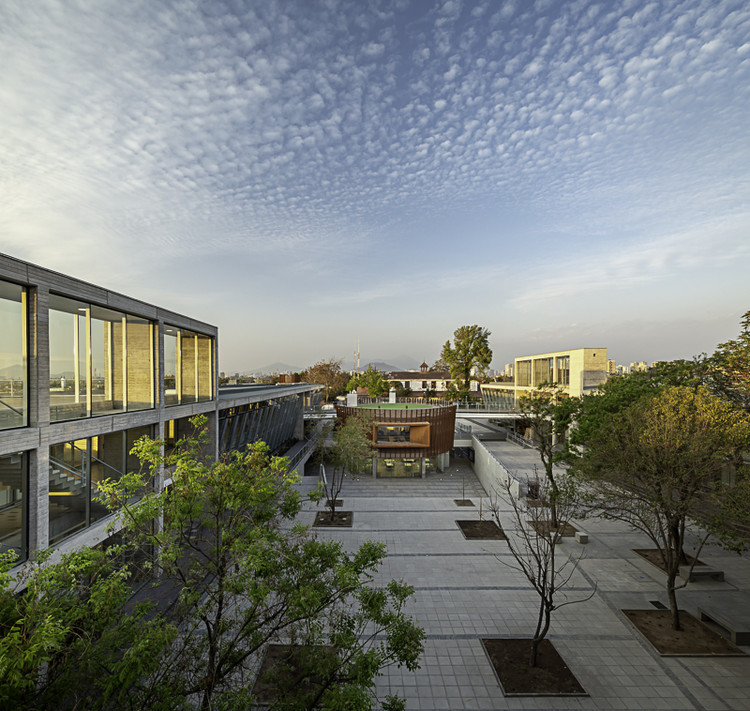Wilkes Elementary School Mahlum
2015-02-10 00:00
土木工程2020工程结构PCS结构解决方案机电一体化
Civil Engineering 2020 Engineering Structural PCS Structural Solutions Mechanical, Electrical & Plumbing ARUP Landscape Cascade Design Collaborative Acoustical and AV SSA Acoustics Food Service Bundy & Associates Cost Estimator Rider Levett Bucknell Geotechnical Associated Earth Sciences General contractor Spee West Construction Manufacturers Loading... More Specs Less Specs
架构师提供的文本描述。大脑研究表明,游戏和学习是不可分割地交织在一起的;游戏是发展学术技能、学校准备和学校表现的核心要素。典型的学校将一所学校与另一所学校隔离开来,明确规定了每一所学校应该独立发生的时间和地点在美国,这种生理和时间上的分离降低了玩耍的价值:超过3万所学校减少了课间休息;在1997年至2003年期间,户外游戏减少了50%;在过去的20年里,孩子们每周失去8小时的可自由支配的玩耍时间。
Text description provided by the architects. Brain research shows that play and learning are inextricably intertwined; that play is a central ingredient in the development of academic skills, school readiness, and school performance. Typical schools isolate one from the other, clearly defining times and places that each should occur independently. This physical and temporal separation has devalued play in America: more than 30,000 schools have dropped recess; between 1997 and 2003, outdoor play fell 50%; in the last 20 years, children have lost over 8 hours of discretionary playtime per week.
通过将社会和教育空间交织在一起,新威尔克斯小学对这一令人遗憾的做法提出了挑战。威尔克斯的设计包括视觉和物理连接,这样学习就可以在任何地方进行。通过透明度,解决了整个儿童的需要:消除了对教育机会的身体限制,支持了一系列学习方式,并模糊了可以进行学习或玩耍的界限。这种功能安排促进了协作,并为学习规模的变化创造了机会-从多课堂聚会到亲密的个人体验。
By interweaving social and educational spaces, the new Wilkes Elementary School challenges this deplorable practice. The design for Wilkes embraces visual and physical connectivity so that learning can happen everywhere. Through transparency, the needs of the whole child are addressed: physical limitations to educational opportunities are removed, a range of learning styles are supported, and lines between where learning or play can occur are blurred. The functional arrangement fosters collaboration and creates opportunities for variation in scales of learning – from multi-classroom gatherings to intimate individual experiences.
威尔克斯的结构是从山坡上浮现出来的,与自然环境紧密相连,其功能与教育学相结合。这个组织帮助治愈一个严重分裂的网站,并提供教育和设施之间缺失的联系。该建筑延伸到现场,交替结构和庭院,以优化自然日光和抹去物理隔离。院子东端的斜坡与学校与社区相连的操场、花园和运动场融合在一起,而建筑的手指伸向上方,遮住下面的游乐空间。每根手指的两侧和末端都是循环小径,邀请各年级之间的参与协作。
Emerging from the hillside, the structure of Wilkes is knitted with the natural environment and its functions with pedagogy. This organization helps heal a steeply divided site and provides the missing connection between education and facilities. The building extends into the site, alternating structure and courtyard to optimize natural daylight and erase physical separation. Courtyards slope at the east end to merge with the playground, gardens, and athletic fields that link the school to the community, while the fingers of the building reach out above, sheltering play spaces below. Circulation paths run alongside and at the end of each finger, inviting engagement and collaboration across grade levels.
在学校里,威尔克斯的450名学生经历了从教室到内部和外部共享学习空间的无缝过渡。玻璃强化了教室与内部共享学习区域之间的连接,以及与校外庭院的连接。每个学习空间的大小和组成因学生的发展需要而不同,以补充学校的个性化和以能力为基础的课程,从而支持动态教学和独立学习,从而提高学生的责任感。
Within the school, Wilkes’s 450 students experience a seamless transition from classrooms to interior and exterior shared learning spaces. Glazing reinforces connectivity between classrooms and interior shared learning areas, and with the courtyards beyond. The size and composition of each learning space varies in response to the developmental needs of students to complement the school’s personalized and ability-based curriculum. In this way, the school supports dynamic teaching and independent learning that increases student accountability.
入口处有一个很大的覆盖区域,鼓励社区参与,支持家长下车接学生时的随意互动。这一入口进入主公共走廊,方便地进入图书馆、音乐室、公共场合和社区体育馆,使威尔克斯成为该岛北端最大的公共建筑和新的文化中心。
A large covered area at the entry encourages community involvement by supporting casual interactions as parents drop off and pick up students. This entry feeds into the main public corridor, which provides convenient access to the library, music room, commons and community gymnasium, making Wilkes the largest public building, and new cultural hub, for the north end of the island.
以强烈的社区精神作为土地的看护者,可持续的设计要素被纳入整个新学校,以尽量减少建筑对环境的影响和运营成本,同时最大限度地提高教学效益。可持续的战略包括100%的现场雨水在fi过滤,一个创新的大型现场化粪池系统(L.O.S.S)处理100%的废水在现场,100%多孔铺路,和热回收。一种由40口地热井和一个水到水热泵和电锅炉辅助组成的混合供暖系统,预计比基线小学系统效率高40%。操场内学生和社区拥有的花园床支持威尔克斯和附近的一个工作农场之间的计划伙伴关系。室内空间受益于无毒的fiNish材料,可操作的窗户,自然冷却,和辐射地板,增加热舒适的区域,学生坐和玩。
With a strong community ethos as caretakers of the land, sustainable design elements are integrated throughout the new school to minimize the building’s environmental impact and operating costs, while maximizing the benefit to teaching and learning. Sustainable strategies include 100% on-site stormwater infiltration, an innovative large on-site septic system (L.O.S.S) to treat 100% of waste water on site, 100% porous paving, and heat recovery. A hybrid heating system comprising forty geo-thermal wells and a water-to-water heat pump with electric boiler assist is anticipated to be 40% more efficient than a baseline elementary school system. Student- and community-owned garden beds within the playground support a programmatic partnership between Wilkes and a nearby working farm. Interior spaces benefit from non-toxic finish materials, operable windows, natural cooling, and radiant floors that increase thermal comfort in the zone where students sit and play.
Location 12781 Madison Avenue Northeast, Bainbridge Island, WA 98110, USA
Category Elementary & Middle School
Principal-in-Charge Gerald (Butch) Reifert AIA
Managing Principal David Mount AIA
Project Designer JoAnn Wilcox AIA
Project Architect Jesse Walton AIA
Project Team Dwayne Epp AIA, James Steel AIA, Cristine Ross Traber AIA, Amy Noe IIDA
Interior Designer NCIDQ, Masako Wada IIDA
Photographs Jeremy Bittermann , Benjamin Benschneider
 举报
举报
别默默的看了,快登录帮我评论一下吧!:)
注册
登录
更多评论
相关文章
-

描边风设计中,最容易犯的8种问题分析
2018年走过了四分之一,LOGO设计趋势也清晰了LOGO设计
-

描边风设计中,最容易犯的8种问题分析
2018年走过了四分之一,LOGO设计趋势也清晰了LOGO设计
-

描边风设计中,最容易犯的8种问题分析
2018年走过了四分之一,LOGO设计趋势也清晰了LOGO设计































































